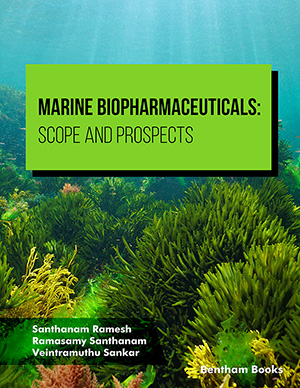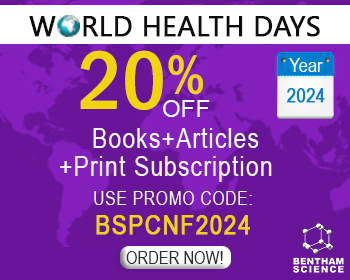Abstract
The pathophysiology linking diabetes and cardiovascular disease (CVD) is complex and multifactorial. The specific type of cardiomyopathy associated with diabetes, known as diabetic cardiomyopathy (DCM), is recognized as asymptomatic progression of structural and functional remodeling in the heart of diabetic patients in the absence of coronary atherosclerosis and hypertension. In other words, the presence of heart disease specifically in diabetic patients is also known as diabetic heart disease. This article reviews the impact of diabetes in heart and vascular beds focusing on molecular mechanisms involving the oxidative stress, the inflammation, the endothelium dysfunction and the alteration of the homeostasis of calcium, among others mechanisms. Understanding these mechanisms will help identify and treat CVD in patients with diabetes, as well as to plan efficient strategies to mitigate DCM impact in those patients.
Keywords: Cardiovascular disease, diabetes, diabetic cardiomyopathy, calcium homeostasis, oxidative stress, endothelial dysfunction.
[PMID: 27290816]
[http://dx.doi.org/10.1016/j.diabres.2016.04.048] [PMID: 27242128]
[http://dx.doi.org/10.1016/j.cmet.2012.11.012] [PMID: 23312281]
[http://dx.doi.org/10.1001/jama.1974.03230510023016] [PMID: 4278055]
[http://dx.doi.org/10.1016/j.amjcard.2003.11.003] [PMID: 15094099]
[http://dx.doi.org/10.2337/diabetes.51.4.1166] [PMID: 11916940]
[http://dx.doi.org/10.1007/s10741-012-9313-3] [PMID: 22453289]
[http://dx.doi.org/10.1146/annurev.physiol.70.113006.100455] [PMID: 17988210]
[http://dx.doi.org/10.1016/0002-9149(72)90595-4] [PMID: 4263660]
[http://dx.doi.org/10.2337/diabetes.53.12.3201] [PMID: 15561951]
[http://dx.doi.org/10.1016/j.acvd.2011.11.007] [PMID: 22633296]
[http://dx.doi.org/10.2337/diabetes.55.03.06.db05-1284] [PMID: 16505222]
[http://dx.doi.org/10.1016/j.yjmcc.2006.12.018] [PMID: 17320100]
[http://dx.doi.org/10.1007/s00726-013-1504-2] [PMID: 23665912]
[http://dx.doi.org/10.3390/ijms161025234] [PMID: 26512646]
[http://dx.doi.org/10.1056/NEJMra0800239] [PMID: 18480207]
[http://dx.doi.org/10.1016/j.ceca.2014.08.007] [PMID: 25218935]
[http://dx.doi.org/10.1152/ajpheart.00313.2002] [PMID: 12234790]
[http://dx.doi.org/10.1016/j.jdiacomp.2015.04.012] [PMID: 26045205]
[http://dx.doi.org/10.1111/jdi.12250] [PMID: 25422760]
[http://dx.doi.org/10.1161/hh1501.094115] [PMID: 11485979]
[http://dx.doi.org/10.1016/j.yjmcc.2008.10.007] [PMID: 19007787]
[http://dx.doi.org/10.1161/01.RES.0000065620.39919.20] [PMID: 12623881]
[http://dx.doi.org/10.2337/diabetes.52.7.1825] [PMID: 12829653]
[http://dx.doi.org/10.4239/wjd.v5.i6.860] [PMID: 25512788]
[http://dx.doi.org/10.1016/j.yjmcc.2015.12.011] [PMID: 26705059]
[http://dx.doi.org/10.1016/j.lfs.2012.10.011] [PMID: 23123443]
[http://dx.doi.org/10.1161/01.cir.0000441139.02102.80] [PMID: 24352519]
[http://dx.doi.org/10.1385/CT:3:3:219] [PMID: 14555788]
[http://dx.doi.org/10.2337/diabetes.51.6.1938] [PMID: 12031984]
[http://dx.doi.org/10.1038/labinvest.3780057] [PMID: 10780668]
[http://dx.doi.org/10.1161/01.CIR.82.3.848] [PMID: 2394006]
[http://dx.doi.org/10.1016/S0046-8177(84)80307-X] [PMID: 6238897]
[http://dx.doi.org/10.1007/s11010-006-9401-6] [PMID: 17206378]
[http://dx.doi.org/10.1161/CIRCULATIONAHA.107.728550] [PMID: 18071071]
[http://dx.doi.org/10.2337/diabetes.51.9.2709] [PMID: 12196463]
[http://dx.doi.org/10.1210/er.2003-0012] [PMID: 15294881]
[http://dx.doi.org/10.1016/j.jacc.2008.05.019] [PMID: 18702970]
[http://dx.doi.org/10.1097/00004872-199715066-00004]
[http://dx.doi.org/10.1089/dia.2011.0120] [PMID: 21751873]
[http://dx.doi.org/10.1152/ajpcell.1983.245.1.C1] [PMID: 6346892]
[http://dx.doi.org/10.1038/415198a] [PMID: 11805843]
[PMID: 1320733]
[http://dx.doi.org/10.1097/FJC.0b013e318228e68c] [PMID: 21753738]
[http://dx.doi.org/10.1016/j.yjmcc.2006.08.018] [PMID: 17027851]
[http://dx.doi.org/10.2337/diabetes.54.11.3082] [PMID: 16249429]
[http://dx.doi.org/10.1186/1475-2840-13-75] [PMID: 24712865]
[http://dx.doi.org/10.1152/ajpcell.00014.2011] [PMID: 21525431]
[http://dx.doi.org/10.1253/circj.CJ-08-0945]
[http://dx.doi.org/10.1007/s00109-014-1234-2] [PMID: 25471481]
[http://dx.doi.org/10.1159/000016321]
[http://dx.doi.org/10.1161/CIRCRESAHA.110.225888] [PMID: 21252153]
[http://dx.doi.org/10.1152/ajpheart.00104.2013] [PMID: 23792674]
[http://dx.doi.org/10.3389/fphar.2015.00325] [PMID: 26793113]
[http://dx.doi.org/10.1016/j.yjmcc.2015.07.002] [PMID: 26219954]
[http://dx.doi.org/10.1161/CIRCRESAHA.115.303831] [PMID: 25047165]
[http://dx.doi.org/10.1016/j.yjmcc.2012.08.005] [PMID: 22921230]
[http://dx.doi.org/10.1016/j.pharmthera.2008.03.008] [PMID: 18508125]
[http://dx.doi.org/10.2337/diabetes.51.12.3461] [PMID: 12453900]
[http://dx.doi.org/10.1074/jbc.M112.383778] [PMID: 22992728]
[http://dx.doi.org/10.1016/j.ijcard.2007.12.081] [PMID: 18378339]
[http://dx.doi.org/10.1161/01.HYP.26.6.869] [PMID: 7490142]
[http://dx.doi.org/10.1172/JCI116149] [PMID: 1469103]
[http://dx.doi.org/10.1002/jcp.10333] [PMID: 12891700]
[http://dx.doi.org/10.1152/physrev.00045.2011] [PMID: 23303908]
[http://dx.doi.org/10.2174/092986709787002853] [PMID: 19149564]
[http://dx.doi.org/10.1042/BJ20111708] [PMID: 22329799]
[http://dx.doi.org/10.1111/dme.12640] [PMID: 25407692]
[http://dx.doi.org/10.1590/2359-3997000000116] [PMID: 26886090]
[http://dx.doi.org/10.1161/01.RES.76.6.980] [PMID: 7758169]
[http://dx.doi.org/10.1002/biof.5520100211] [PMID: 10609877]
[http://dx.doi.org/10.1016/j.diabres.2012.09.003] [PMID: 23245808]
[http://dx.doi.org/10.1016/j.jcjd.2015.01.004] [PMID: 25797110]
[http://dx.doi.org/10.1155/2016/8734827] [PMID: 27123454]
[http://dx.doi.org/10.1016/S1537-1891(03)00007-7] [PMID: 12747958]
[http://dx.doi.org/10.1161/01.RES.0000187473.85419.3e] [PMID: 16254217]
[http://dx.doi.org/10.1371/journal.pone.0123432] [PMID: 25884983]
[http://dx.doi.org/10.1006/jmcc.1998.0840] [PMID: 10072712]
[http://dx.doi.org/10.1016/j.tcm.2006.02.001] [PMID: 16713532]
[http://dx.doi.org/10.1007/s00424-010-0807-3] [PMID: 20238124]
[http://dx.doi.org/10.1155/2012/481840] [PMID: 22474423]
[http://dx.doi.org/10.1111/j.1753-0407.2009.00030.x] [PMID: 20923534]
[http://dx.doi.org/10.1016/j.niox.2015.12.007]
[http://dx.doi.org/10.1016/j.ceca.2005.09.008] [PMID: 16243395]
[http://dx.doi.org/10.1371/journal.pone.0036840] [PMID: 22590623]
[http://dx.doi.org/10.1152/ajpheart.00699.2009] [PMID: 19855058]
[http://dx.doi.org/10.1161/01.RES.0000023391.40106.A8] [PMID: 12114324]
[http://dx.doi.org/10.1152/ajpheart.2000.278.3.H714] [PMID: 10710338]
[http://dx.doi.org/10.1124/jpet.114.216747] [PMID: 25085043]
[http://dx.doi.org/10.1172/JCI117724] [PMID: 7860758]
[http://dx.doi.org/10.1111/j.1476-5381.2010.00955.x] [PMID: 20942845]
[http://dx.doi.org/10.1159/000075238] [PMID: 14646372]
[http://dx.doi.org/10.1038/sj.bjp.0706121] [PMID: 15685205]
[http://dx.doi.org/10.1152/ajpcell.00267.2009] [PMID: 19846755]
[http://dx.doi.org/10.1042/BST0350890] [PMID: 17956239]
[http://dx.doi.org/10.1016/j.ejphar.2009.04.029] [PMID: 19393642]
[http://dx.doi.org/10.1111/j.1440-1681.2010.05373.x] [PMID: 20337661]
[http://dx.doi.org/10.1016/j.mce.2008.12.004] [PMID: 19135126]
[http://dx.doi.org/10.1177/1535370215609693] [PMID: 26468167]
[http://dx.doi.org/10.1186/s12933-015-0259-3] [PMID: 26253538]
[http://dx.doi.org/10.2174/1570161111311040009] [PMID: 23905640]
[http://dx.doi.org/10.1016/j.drudis.2015.02.012] [PMID: 25748088]
[http://dx.doi.org/10.3109/07435800.2015.1094489] [PMID: 26934363]
[http://dx.doi.org/10.3727/096368910X0177] [PMID: 22289660]
[http://dx.doi.org/10.2337/dbi16-0003] [PMID: 27208184]
[http://dx.doi.org/10.1007/s10741-016-9565-4] [PMID: 27221074]
[http://dx.doi.org/10.1155/2015/895714] [PMID: 26273307]


























